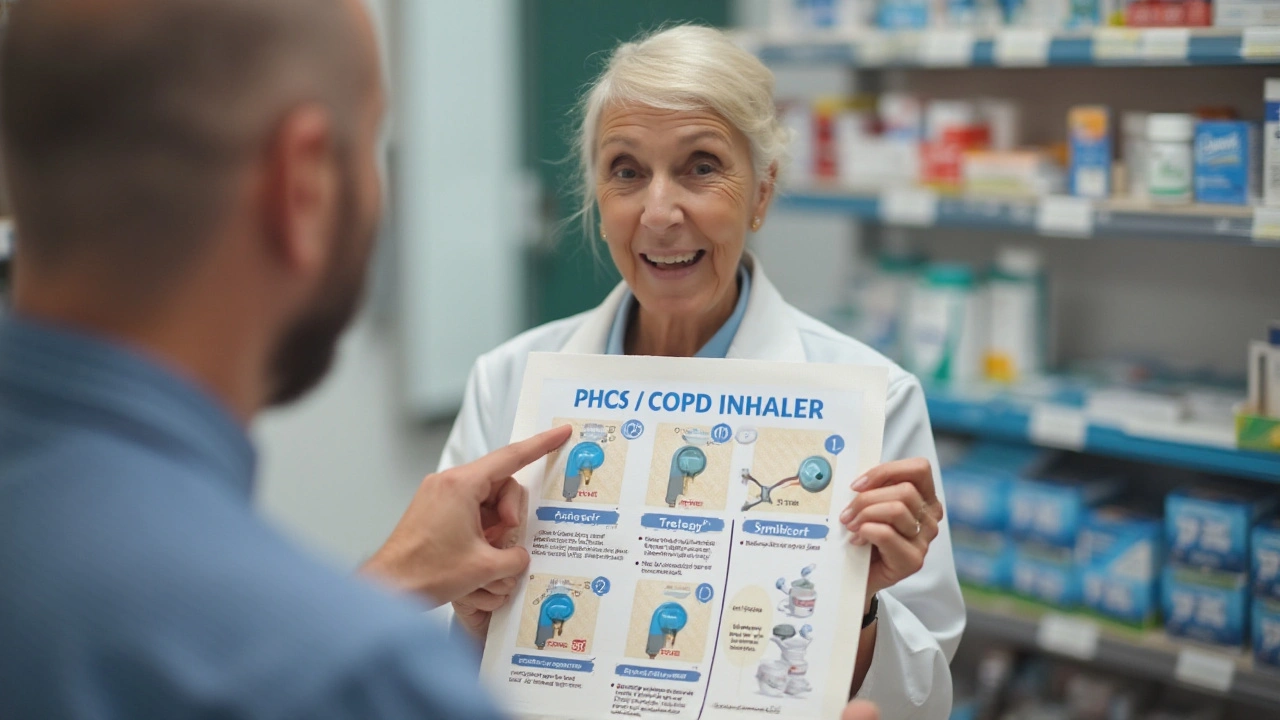COPD management: practical steps to breathe easier
Striking fact: COPD is the third leading cause of death worldwide, but smart day-to-day habits and the right treatments can cut flare-ups and keep you active. If you or someone you care for has COPD, this page gives clear, useful steps you can use now.
Start with your doctor: get a clear diagnosis with spirometry and ask for a written COPD action plan. That plan should list medicines, how to recognize an exacerbation, and when to call for help. Keep a copy at home and one in your phone.
Medications and inhalers
Know the main inhaler types: short-acting bronchodilators (SABA) for quick relief, long-acting bronchodilators (LABA/LAMA) to prevent symptoms, and inhaled corticosteroids (ICS) for people with frequent flares. Combination inhalers mix these to simplify treatment. Always use the inhaler the way your clinician showed you — poor technique means less drug reaches your lungs.
Track medicines: carry a list of current drugs, doses, and purpose. If breathlessness suddenly gets worse, follow your action plan — often it means increasing rescue inhaler use and contacting your healthcare team. Never stop inhaled steroids or long-acting drugs without medical advice.
Daily habits that help
Quit smoking — it’s the single biggest step to slow COPD progression. Use counseling, nicotine replacement, or medications to increase your chance of success. Get regular vaccines: annual flu shots and a pneumococcal vaccine reduce severe infections that trigger exacerbations.
Pulmonary rehabilitation is underrated but powerful: a program with guided exercise, breathing training, and education can improve stamina and mood. Practice breathing techniques like pursed-lip breathing to ease shortness of breath during activity.
Stay active and eat well. Aim for regular, gentle exercise — walking or cycling — and a balanced diet to maintain muscle strength. If you lose weight or gain it quickly, tell your provider; nutrition affects breathing effort.
Monitor and plan: use a simple diary or an app to record symptoms, rescue inhaler use, and oxygen levels if you have a pulse oximeter. Learn the warning signs of an exacerbation: increasing shortness of breath, change in phlegm color or volume, fever, or confusion. Early treatment reduces hospital stays.
Oxygen and advanced care: some people need home oxygen or non-invasive ventilation. These are prescribed after testing and can improve daily function and sleep. Discuss goals of care with your clinician and family — having clear plans makes stressful times easier.
When to seek emergency care: if you have sudden severe breathlessness that doesn't improve after using your rescue inhaler, lips or fingernails turn blue, or you become confused or faint, call emergency services right away. Carry emergency contacts and a copy of your COPD action plan. Quick help can prevent complications and keep you out of hospital. Ask about pulmonary rehab early today.
Small steps matter: clean inhaler devices regularly, avoid smoky or dusty places, and join a support group to share tips and stay motivated. With the right plan, many people with COPD keep working, traveling, and enjoying life.

